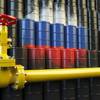Divers Struggle in Search for Ferry Survivors
Rescuers struggle with waves, murky waters; Captain faces charge of abandoning South Korean ferry. About 290 people still missing, many of them teenagers.
Rescuers struggled with strong waves and murky waters on Thursday as they searched for hundreds of people, most of them teenagers from the same school, still missing after a South Korean ferry capsized 36 hours ago.
Coastguard, navy and private divers scoured the site of the accident, about 20 km (12 miles) off the country's southwestern coast.
Earlier, rescue teams hammered on the hull of the upturned, mostly submerged vessel, hoping for a response from anyone trapped inside, but they heard nothing, local media reported.
The vessel, carrying 475 passengers and crew, capsized on Wednesday during a journey from the port of Incheon to the holiday island of Jeju.
Nine people have been found dead and 179 were rescued, according to the South Korean government, leaving 287 unaccounted for and possibly trapped in the vessel.
One parent, Park Yung-suk, told Reuters at the port of Jindo, where rescue efforts are centred, that she had seen the body of her teenage daughter's teacher brought ashore.
"If I could teach myself to dive, I would jump in the water and try to find my daughter," she said. Her daughter was one of 340 children and teachers from the Danwon High School in Ansan, a Seoul suburb, on board the vessel.
The captain of the ship, Lee Joon-seok, 69, faces a criminal investigation, coastguard officials said, amid unconfirmed reports that he was one of the first to jump to safety from the stricken vessel.
One official said authorities were investigating whether the captain had indeed abandoned the vessel early and one of the charges he faced was violating a law that governs the conduct of shipping crew.
Many survivors told local media that Lee was one of the first to be rescued, although none actually saw him leave the ship. The coastguard and the ferry operator declined comment.
Although the water at the site of the accident is relatively shallow at under 50 metres (165 feet), it is still dangerous for the 150 or so divers working flat out, experts said. Time was running out to find any survivors trapped inside, they said.
"The chances of finding people in there (alive) are not zero," said David Jardine-Smith, secretary of the International Maritime Rescue Federation, adding, however, that conditions were extremely difficult.
"There is a lot of water current and silt in the water which means visibility is very poor and the divers are basically feeling their way around."
The government said it was not giving up on the possibility of finding survivors, while the coastguard also turned its attention to what may have caused the disaster in calm seas.
"Today, we began looking into the cause of the submersion and sinking ... focusing on any questions about crew negligence, problems with cargo holding and structural defects of the vessel," senior coast guard official Kim Soo-hyun said.
There has been no official explanation for the sinking, although officials denied reports the ship, built in Japan 20 years ago, was sharply off its authorised route.
Although the wider area has rock hazards and shallow waters, they were not in the immediate vicinity of its usual path.
SAFETY DEFICIENCIES
The ferry was found to have three safety deficiencies in 2012, including one related to navigation, but passed subsequent safety checks in 2013 and 2014, according to international and Korean shipping records.
The ferry's capacity was increased to more than 900 people from 800 when it was imported from Japan in late 2012, shipping sources said, but the expansion passed all safety tests. The ship, its passengers and cargoes are all under two separate insurances, according to industry sources.
State broadcaster YTN quoted investigation officials as saying the ship was off its usual course and had been hit by a veering wind which caused containers stacked on deck to shift.
The vessel was listing heavily to one side on Wednesday as passengers wearing life jackets scrambled into the sea and waiting rescue boats.
It sank within about two hours and witnesses and media showed that two life rafts from the ship successfully inflated and launched. Earlier reports said just one had inflated.
The operator, Chonghaejin Marine Co Ltd, based in Incheon, came under sharp criticism after its officials, for the second day, avoided many questions posed about the conduct of the captain and crew.
The unlisted operator, which owns four other vessels, reported an operating loss of 785 million won ($756,000) last year.
A company called Web Solus is providing an underwater drone free of charge to examine the interior of the vessel where survivors could be located.
"Families and rescuers have been just looking at the surface of the sea. We have to move fast and at least see some of the vessel under the water," Ko Se-jin, the operator, told Reuters.
Among those on the ship were two Chinese citizens, according to Chinese media, one Russian and two Filipinos. The Philippines citizens were safe, according to Korean authorities, but the whereabouts of the others were not known.
Hope rests on whether passengers inside had been able to find air pockets, Jardine-Smith, the rescue expert, said. "It is not impossible that people have survived, but, tragically, it's very unlikely that many will have done."
By Narae Kim











